Apple has unveiled iOS7—the biggest change ever made to, arguably, the world's most popular smartphone and tablet operating system.
The timing of this radical transformation is no accident. Apple is facing increasing competition. Because of the impressive gains from players such as Samsung, the mobile landscape is no longer under Cupertino's control.
Which is why marketers shouldn't see iOS7 as just a fancy new face on an old platform.
Apple is displaying an evolved attack to take on an evolving mobile world. Accordingly, marketers in all fields would benefit from taking a closer look at the new features of iOS7; after all, they need to start planning their own strategies to succeed in the ever-changing and increasingly more important world of mobile.
1. New Safari: The Web Just Got Even More Crucial
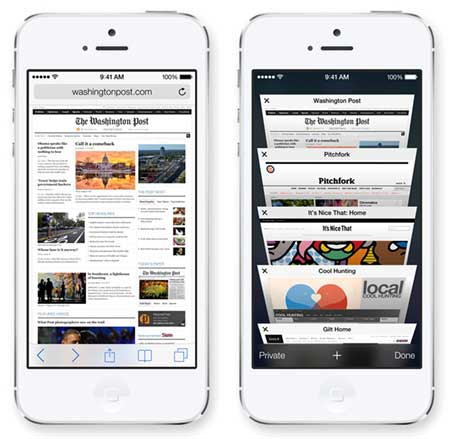
Web vs. native is one of the oldest debates in the young world of mobile, and it simply won't go away.
Many marketers face this question, and the choice comes down to distribution, performance, and openness. Each side has pros and cons, and there truly is no one correct answer. But we've known for at least two years that most mobile consumers prefer reading on the Web. It's more natural to open up Safari to see your favorite news source than it is to go to an app.
Apple's redesign of Safari will only strengthen the case for choosing the Web as your go-to distribution strategy, especially if you are a content marketer.
The new mobile Safari comes with some significant improvements. Notably, the search and address bar are unified—a helpful feature a long time coming. As well, there is no longer a limit to how many tabs you can have open. Your plethora of open pages will be navigated by swiping up and down in a gallery view, familiar to any Apple user.
The theme of these design tweaks is the lowering of barriers to browsing on tiny devices. So... Web reading on mobile is going to get even easier, and potentially even more popular, becoming the preferred method of content consumption.
Which probably means it's a good idea for you to start making your presence on the mobile Web stronger, too. Have you created a spectacular mobile site yet? What mobile Web opportunities are you overlooking?
2. New Camera and What It Means for Instagramers
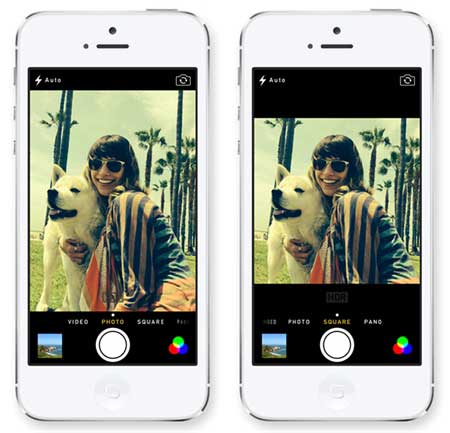
With the billion-dollar Facebook acquisition of Instagram, and the addition of video, the wildly popular photo-sharing app has taken center stage in the world of visual mobile marketing.
With the new camera features in iOS 7, particularly the filters and square frame mode, Apple is trying to take a bite out of Instagram's (and Facebook's) market.
Though Apple's new camera seems to share a lot in common with Instagram, marketers won't likely find their audiences moving en masse away from Instagram. If anything, the new square feature for the iPhone camera (already the world's most used camera) will just make the camera even more convenient to use for uploading your Instagrams, without having to crop. This might just be Apple's way of making sure you don't switch to Instagram as your default camera. But it doesn't appear to pose any serious threat, since the social component of Apple's photo streams is limited.
People will continue to use Instagram on iPhones, but it just might get easier.
3. AirDrop, a New Way to Engage Hyper-Locally
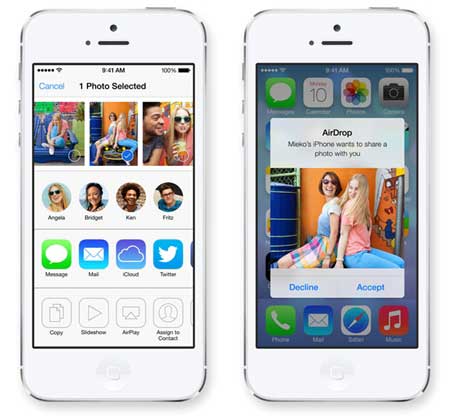
AirDrop is a way to share files across Apple devices wirelessly, without the use of a Wi-Fi network. For the first time, it will become available on iPhones, iPods, and iPads with the launch of iOS7. Simply tap the share icon on most files, such as a photo or Passbook ticket, and you can select to send it to anyone near you who has AirDrop turned on.
As a marketer, particularly marketers in the brick and mortar world, this should be sparking inspiration.
AirDrop is seen in many ways as Apple's answer to NFC technology, the long heralded tech that can revolutionize the retail experience, and turn the cellphone into your wallet. It doesn't seem that AirDrop is a direct replacement of that, but it offers some possibilities for marketers, regardless. Just imagine, at an outdoor event or a restaurant, being able to easily, instantly send coupons and promotions to Apple users in the immediate vicinity.
Whether AirDrop becomes the killer near-proximity file-sharing service is beside the point. Every device manufacturer will certainly create its own, and there will be startups that emerge to bring a unified solution across platforms. What is important to keep in mind as a marketer is the new dimension these technologies provide you—a new level on which you can start to interact with your customers, and surprise and wow them.
How could you use it to speed up check out? Or spread the word about your local pizzeria? Start to think about this stuff, and get ahead of the game.
4. Multitasking Arrives for Real, Finally Unlocking the 'Background'
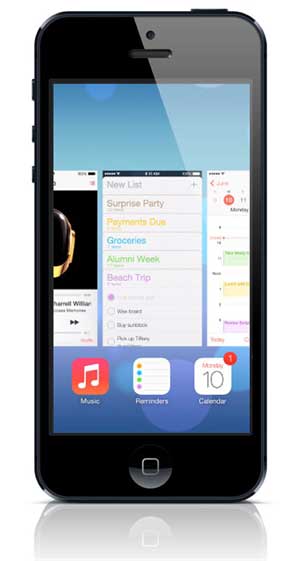
From a user perspective, since iOS's inception people have been chastising Apple for not having true multitasking. Really, Apple's previous version of multitasking was more like hitting pause button on one app, closing it, and opening a new one. It was staggered and it slowed you down quite a bit.
As with Safari, again Apple is making the experience of using its iOS devices easier and faster with the removal of this barrier and the introduction of more seamless multitasking. The difference this time is that apps continue to get updates when running in the background; Apple learns which apps you check the most and will intelligently keep those updated.
For marketers, this might mean a few things. Once again, the focus here is on simplifying and speeding up the mobile reading experience. Users will be hopping around from app to app with fewer obstacles and annoyances. They are more likely to get that notification from Facebook rather than ditching the app at the load screen. It also means that if you have the clout and budget to be building a major native app, particularly if you are a brand with a major following and user base, you might be able to create better user experiences for your own apps.
However, in general, though this is a big improvement for the users, as of now there is no clear indication it will have huge impact on mobile marketers. One thing that would make a big difference is the ability for apps to be location aware while in the background: Imagine an app like Yelp telling users they are near your restaurant and offering them a coupon; but this is not the case at the moment with multitasking.
5. iTunes Radio Opens Door for Music Marketers, Not Much Else
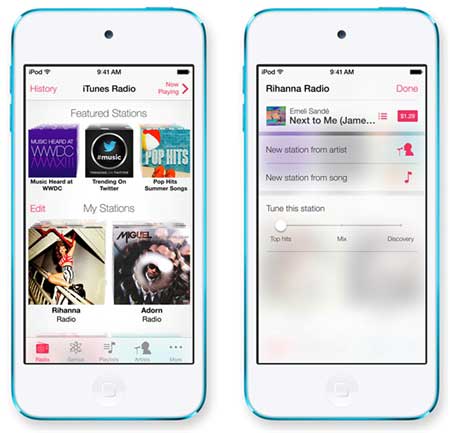
In another move to match competition in a space where Apple has lost its footing, iOS7 is taking on the online radio and music streaming startups, such as Rdio and Spotify, with iTunes Radio.
iTunes radio lets you instantly play music streaming from the Web that you don't own on your iTunes library. With iTunes Match, it's free; without, you'll be subjected to the occasional radio ad.
While Grooveshark, Rdio, and Spotify all appear to have done wonders for the discovery of musicians and new music, the marketing potential of all these platforms and Apple's new addition are pretty limited.
Unless you are sponsoring an ad, or you're in the music business, you have only a few other ways to fit iTunes Radio into a mobile marketing strategy. One example might be curating and sharing great music lists with your fan base through social media—a content marketing approach to brightening up their day and building a relationship with them. Otherwise, this is simply a useful indicator of the future of mobile habits, a useful lesson for marketers.
The bottom line is that we are moving away from a world of owned, local content (MP3s, videos, etc.), to one where everything is instantly available, and mostly free, from the Web. Marketers and businesses will all have to respond to this cloud-based world, and use it to their benefit to find new ways to make money. Netflix and its disruption of the TV model, is probably the best example of such disruption.
6. New App Store Features: The Rise of Local Apps
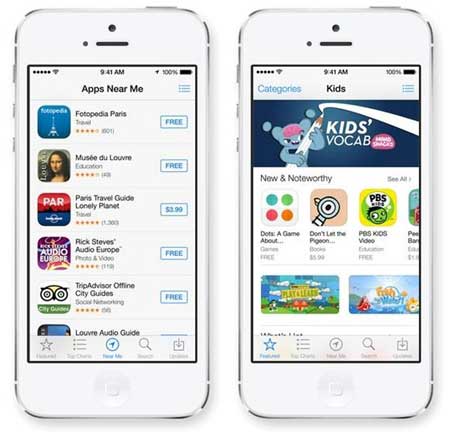
The App Store has never been the best or easiest tool for finding great apps. As a result, startups have emerged to make app discovery easier and better for the user; among them is Pretzil which continually tries to disrupt app discovery with gamification and location based approaches.
But it appears, in yet another move to "fix" a broken part of iOS, Apple is now focused on making its App Store better with the addition of a feature called Near Me, which shows you popular apps in your city; it is also enhancing the user experience by, for example, not limiting to 25 the number of apps it shows you in the "best of charts," instead letting you scroll for as many more as there are.
The Near Me feature will be of particular interest to marketers and app makers tackling the local angle. What major local apps are in your city that will now get a bump thanks to this new visibility? Perhaps there might be a way to work with them on a campaign, whether that's a sponsorship or some form of content marketing. If you are a local brand, you might also want to consider, or reconsider, an app strategy, hoping to ride this new discoverability potential.
7. Deeper Integration With Social Means Pros and Cons
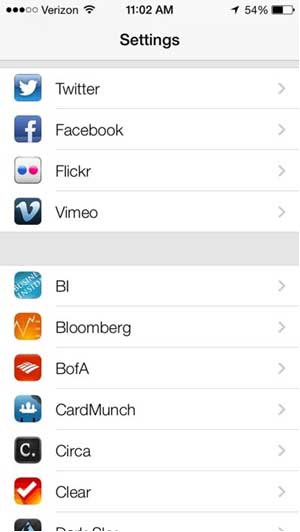
Finally, iOS will bring a deeper integration with more popular social networks, including Flickr and Vimeo. iOS already supports the same integration with Twitter and Facebook, which makes it seamless to share files and elements from your phone out into those networks, at just one touch. Rumors have also been flying around that LinkedIn will eventually get the same treatment.
As people start to use mobile devices more frequently than their laptop or desktop computers, sites like Vimeo and Flickr are usually used as apps and are not nearly as easy to use on smaller devices. Again, what Apple is doing is eliminating a frustrating element of user experience in an effort to make spending time on its devices easier and more natural. Now, you will be able to share your content from camera app directly to Vimeo and Flickr in just one tap. Though this is good news for users, it might have an averse affect on marketers, who rely on capturing the attention of users when they visit an app or website. You will have fewer people going to those sites to add content, and only attending when they feel like consuming. Which means fewer eyeballs.
On the other hand, as has been the case with Twitter and Facebook iOS integrations, the seamless experience can actually draw users back to the app or site more frequently, and there's no question it makes sharing and producing content much easier. So, as a brand or marketer, especially if you work with Vimeo and Flickr (and potentially LinkedIn), you should keep in mind that these services on mobile are about to change drastically, for better or worse.
The Big Picture for Marketers
The major updates and the hottest features of iOS 7 seem to fall into two categories. They are either targeted at Apple's existing competition, such as with the camera app and iTunes Radio, or they are designed to make the mobile phone experience simpler, faster, and much more enjoyable for the user.
All that is going to mean, if things go as planned for Apple, heavier Web content reading, more content creation and interaction with major social networks such as Instagram and Flickr, and a more seamless total phone experience.
The takeaway for marketers is important. The new features provide not only new opportunities and new campaign ideas but also a credible litmus test for the future of mobile computing—which is important, because mobile computing is taking over all computing.
Think of it this way: Most of iOS7 is designed to make spending more and more time on your little-screen device... much easier and productive. If there was any doubt we were headed into a world where the mobile screen is the primary screen in a person's life, there should be none now.
How will you design your mobile marketing to fit into this new world of mobile? It needs to be easier to use, it needs to tear down the barriers of the old mobile and desktop paradigms that slowed everything down. And it needs to be incredibly aware of the user's location and preferences.
Mobile is the future, and that's your call to action.




